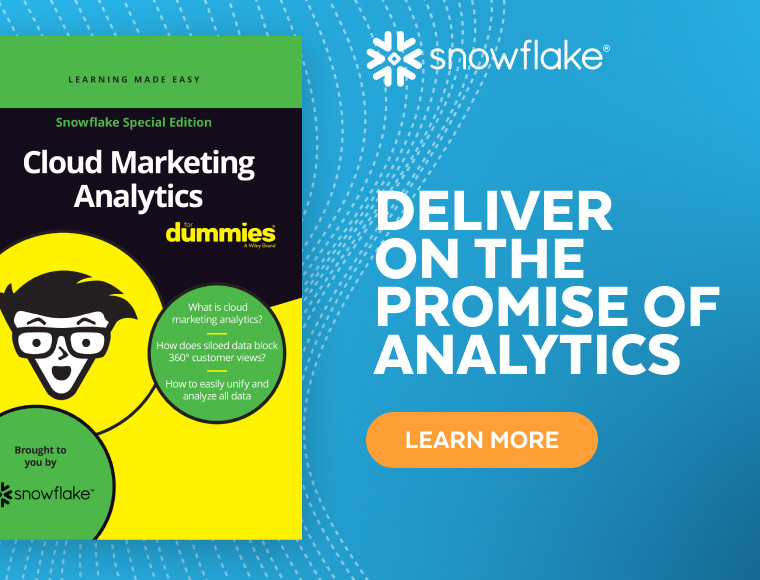What is a Customer Data Platform
A customer data platform (CDP) gathers and organizes customer data pulled from multiple sources and across various touch points and optimizes marketing efforts. CDPs collect and structure real-time data — from customer relationship management (CRM) platforms such as Salesforce and Microsoft Dynamics; transactional systems; digital properties such as websites, marketing emails, and social channels; and information stored in a data management platform — into individual, centralized customer profiles.
A CDP’s primary purpose to activate known audiences in different marketing channels. A typical CDP connects to your marketing systems — including your email, ecommerce, and digital ad platforms — for first-party data you can use to personalize the digital customer experience you deliver to specific individuals.
Many CDPs deliver similar essential functions:
- First-party data ingestion for a range of disparate sources
- Profile building that ties attributes to identities
- The ability to share profile info with other marketing platforms for personalization
Some also offer functionality in adjacent workflows such as reporting, orchestration, and other capabilities.
What are the Benefits of a CDP
CDPs drive return on investment (ROI) for marketers. They do this by consolidating profiles on an individual basis, tying collected attributes to identities, and enabling you to share these profiles so you can personalize the content of email campaigns, digital ads, and other channels. More specifically, CDPs provide:
Unified data
CDPs help you avoid data silos by unifying your customer data and ensuring it is accurate and accessible by everyone within your organization.
First-party data
CDPs gather data directly from your customers, website visitors, social media followers, and email recipients. As the data collected comes via your tracking systems, you can be confident the information is accurate and applicable to building your customer profiles.
Customer profiles
CDPs build customer profiles to help you understand individual customers, providing specific information as well as overall trends derived from analysis.
Coordinated marketing
A CDP unifies all your marketing efforts with accurate and consolidated data. They also collect and organize new data for new and improved campaigns.
4 Types of Customer Data
Your customers engage with your company online and offline through your websites, marketing emails, ecommerce portals, and in-store. Collecting information about these interactions is the first step in understanding and improving the customer experience and figuring out how to improve it. Some of the data types CDPs work with include:
1. Identity data
Identity data is the foundation of your customers’ profile in a CDP. This data type allows you to identify each customer and includes name, demographics (age and gender), location, contact information, social profile, professional information, and account information.
2. Descriptive data
Descriptive data expands on identity data and gives you a fuller picture of your customer. The categories of descriptive data will vary based on your business and may include career information (such as income), lifestyle information (such as whether they own a vehicle or have pets), family information, and hobbies and interests.
3. Digital customer experience data
Data tracked during the digital customer experience, or behavioral data, allows you to understand how your customer engaged with your brand, whether through certain actions, reactions, or transactions. This data includes
- Transactional data, to help you understand your customers’ purchase history
- Site traffic, to give you an understanding of how your customer interacts with your website
- Marketing email engagement, such as email opens, link clicks, and unsubscribes
- Social media activity, including information about how customers engage with your social channels such as Facebook and Twitter
- Customer support interactions, for information about what customers think and feel about your products and services
4. Qualitative Data
Qualitative data provides context for customer profiles and includes your customers’ motivations, opinions, and attitudes about your brand. It could consist of answers to questions such as, “How did you hear about us?” and, “How likely are you to recommend us to a friend or colleague?”
Customer Data Platform Requirements
The data infrastructure needed to support a good CDP includes Data Management Platforms (DMPs), Customer Relationship Management (CRM), and Cloud Data Platform.
Data Management Platforms (DMPs) to target ads to anonymous customer segments more effectively.
Customer Relationship Management (CRM) for referring information to a database marketing team that uses email and other channels to market to known customers.
Cloud Data Platform, a big data platform to provide secure access to all data, enable teams to work on standard data sets without resource contention or performance degradation, and support multiple workloads.
Snowflake and Customer Data Platforms
Snowflake's cross-cloud platform enables CDP (Customer Data Platform) users to discover, instantly share, collaborate, and quickly derive value from the data. You can build your CDP on top of a cloud data platform, or you can buy an out-of-the-box CDP from providers such as Segment, Simon, and AgilOne.
With Snowflake as your single source of truth, you can build or choose a mechanism for establishing unique customer ID aggregation and matching — so you can track customers across your marketing, sales, and operational platforms and ensure you are not missing out on a customer’s interaction with your brand. Snowflake's high scaleability data platform provides powerful benefits to enable data-driven marketing.
